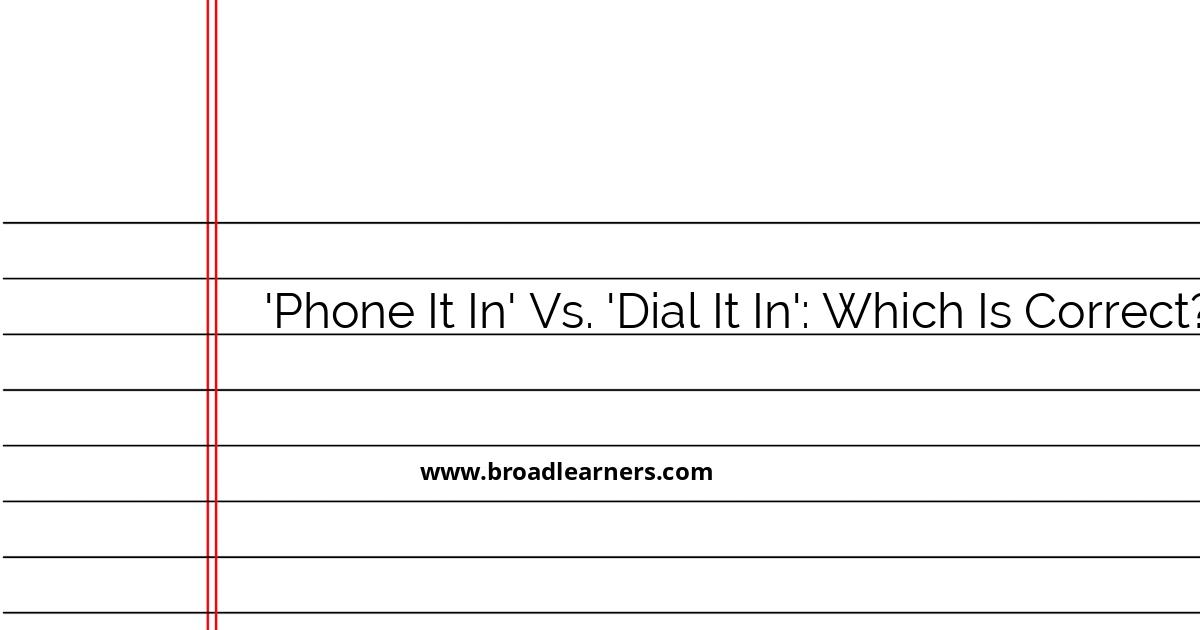The phrases 'Phone It In' and 'Dial It In' are often used in communication, but they have different meanings and connotations. Understanding the nuances of these expressions is crucial for clear and effective communication. In this article, we will delve into their meanings, appropriate usage, and provide examples for clarity.
'Phone It In'
To 'Phone It In' means to do something with minimal effort or enthusiasm. It suggests that the person is not fully engaged or committed to the task at hand, and may be performing it in a lazy or lackluster manner. This phrase is often used in a negative context, implying that someone is not giving their best effort.
Example:
"During the meeting today, it felt like John was just phoning it in. His presentation lacked energy and depth."
Here, the speaker implies that John was not fully invested in his presentation, suggesting his disinterest or lack of effort.
'Dial It In'
In contrast, 'Dial It In' refers to fine-tuning or adjusting something to make it just right. This phrase is often used in a positive sense, indicating precision, attention to detail, or customizing something meticulously. It implies a level of care and accuracy in the execution of a task.
Example:
"The chef dialed in the flavors of the dish perfectly, balancing spices to create an exquisite taste."
Here, the speaker conveys that the chef put in the effort to precisely adjust and perfect the flavors, indicating skill and dedication.
Comparative Summary
| Expression | Meaning | Connotation | Use Case |
|---|---|---|---|
| Phone It In | To do something with minimal effort | Negative | Lack of enthusiasm or commitment |
| Dial It In | To fine-tune or adjust precisely | Positive | Precision and attention to detail |
Conclusion
In conclusion, while "Phone It In" and "Dial It In" may sound similar, they carry distinct meanings and are appropriate in different contexts. "Phone It In" should be used when referring to a task done with minimal effort, often with negative implications. Meanwhile, "Dial It In" is suitable for situations requiring precision and detail, reflecting a positive approach. Understanding the context and connotations of these phrases will enhance your communication skills and help you convey the intended message effectively.

Did I miss anything? Respond below